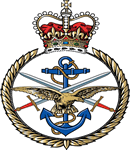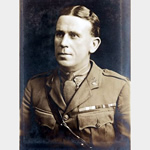Commemorated: | |||
| 1. Document: | New Zealand WW1 Masonic List | N.Z. | |
Awards & Titles: | Distinguished Service Order Military Cross Mentioned in Despatches Twice King's South African Campaign Medal 1902 Clasp British War Medal Victory Medal with Oak Leaf New Zealand War Medal New Zealand Service Medal | ||
Early Life :
Donald Kennedy was born at Gladstone, New Zealand on 24 April 1882.Service Life:
Campaigns:
- The Second Anglo-Boer War 1899-1902, South Africa.
- The First World War 1914-1918, World-wide.
- The Second World War 1939-1945, World-wide.
| Unit / Ship / Est.: |
| Action : War Survivor |
Although many perished in times of national conflict and in the service of their country, many more survived including those interned as Prisoners of War. Stories of those who did survive are included as part of this site, especially those with high gallantry awards, those included against an external rolls of honour and those who had a distinguished career in wartime and military leaderhip.
Detail :
Donald is one of those rare soldiers who served in the South African Wars, the Great War 1914-1919 and in the Second World War.
For his work in South Africa, the official history shows: "While the left of the 2nd Rifles' line in African Support fought with great tenacity, the chief honour of the day undoubtedly belongs to the right company. Inspired by their commander's personality, Kennedy's men held their ground without losing an inch. They killed many of the enemy on their right and repulsed repeated counter-attacks from in front and from the flanks."
In June 1915, and by that date a Company Manager, he enlisted in the New Zealand Expeditionary Force and was drafted to the 4th Battalion, New Zealand Rifle Brigade. Commissioned a 2nd Lieutenant in February 1916, he was embarked for Egypt in the following month and, a few weeks later, was appointed his battalion's Adjutant. It was in this capacity that he was next embarked for France, where he arrived in April 1916. He distinguished himself on several occasions during the Great War.
Kennedy was mentioned in Haig's despatch of 13th November, 1916, the original recommendation stating:
For coolness and devotion to duty throughout the operations near Flers on 15-16 September 1916. He was of great assistance to his Commanding Officer throughout the operations, when H.Q. of the 4th Battalion, 3rd New Zealand Brigade was established at 'Pat Trench' within eleven yards of the objective when it has first been reached. Lieutenant Kennedy went down and despatches important messages under very heavy fire. This officer has been Adjutant of his Battalion since its entry into France last April and has always done exceptionally good work."
The citation for the Military Cross appeared in the London Gazette on the 16th August, 1917:
"During an attack, he was of the utmost assistance to his Commanding Officer, personally carrying forward messages under intense shell fire and taking command of the Battalion for several hours during the absence of a senior officer. His work throughout the attack has been the highest order."
He was wounded in action on 9 October 1917 but, as stated in his service record, he remained on duty.
In June 1918, Kennedy transferred to the 2nd Battalion, New Zealand Rifle Brigade and it was in this capacity that he won his D.S.O.; a rare distinction indeed for a Lieutenant.
The action in question took place at Gouzeaucourt Wood, near Cambrai, on 9-11 September 1918 and a glimpse of Kennedy's gallant work is to be found in the The New Zealand Division 1916-1919: "The 2nd Rifles employed two companies, using a support company to mop up Gouzeaucourt Wood and assist the leading companies in an emergency. The right company was commanded by an extremely gallant and capable officer, Lt. D. Kennedy, M.C., who prior to the attack had made a fine personal reconnaissance of the position. Faced by the impenetrable dark thickets of Gouzeaucourt Wood, his company boldly pressed in two columns up the Metz Road towards Gouzeaucourt and along another smaller track through the trees. The garrison at Queen's Cross was killed or captured in a brief struggle, and African Support was won after stubborn fighting. It was still dark, and the company, which had crossed several trenches on the way, believed and reported that they were in African Trench itself. Some 70 prisoners were captured, consisting mostly of Jägers, but including some men of the 6th (Dismounted) Cavalry Division. There was no sign of the troops on either flank. The V. Corps' assault had been unable to make progress, and the 2nd Rifles' left company, skirting the north edge of the wood and coming under intense machine gun fire from Dead Man's Corner, had been forced into the cover of shell holes round its north-eastern edge. When dawn came, Kennedy realised that he was not in his final objective, but with the company already isolated and with African Trench in front stoutly held, no attempt at further progress could for the moment be contemplated. It would be no mean achievement to hold the ground already won, for both flanks were in the air, and in his rear there was a strong German garrison in the southern part of Gouzeaucourt Wood, which the support company had not thoroughly cleared. The support company, indeed, had suffered somewhat heavily, and the company commander was the only officer left."
The citation for his Distinguished Service Order appears in the London Gazette 11th January, 1919: Prior to the attack this officer gained valuable information by a reconnaissance and in the attack he guided his company through a wood which was partly held by the enemy and seized the ridge beyond. Although both his flanks were exposed, he beat off a counter-attack. During the following days, with little sleep, continually exposed to shell and machine-gun fire and in an area deluged by gas, he was in the thick of the fighting, encouraging his men in every way.
Kennedy received a second mention in despatches for the period 16 September 1918 to 15 March 1919. He was discharged as a Captain in November 1919.
During the Second World War he served as a Captain in the Waitomo Battalion of the New Zealand Home Guard and was awarded the New Zealand Service and War medals for his service.
He is commemorated by his service at the Auckland Museum Online Cenotaph.
Masonic :
| Type | Lodge Name and No. | Province/District : |
|---|---|---|
| Mother : | Tongariro No. 705 E.C. | New Zealand (North Island) |
Initiated | Passed | Raised |
18th August 1910 | 17th November 1910 | 11th March 1911 |
Listed as an auctioneer, aged 28 and resident near Wanganui, NZ, when he was initiated in 1910. His war service is recorded, in part on the contribution record. He remains a member of the fraternity until a resignation, recorded in the book as "Res'd 29/12//1919. He perhaps just let his membership lapse in the immediate post war years and it is not yet possible to say whether he joined any other lodge(s).
Source :
The project globally acknowledges the following as sources of information for research across the whole database:
- The Commonwealth War Graves Commission
- The (UK) National Archives
- Ancestry.co.uk - Genealogy, Family Trees & Family History online
- ugle.org.uk - The records of the United Grand Lodge of England including the Library and Museum of Freemasonry
Additional Source:
- Founder Researchers : Paul Masters & Mike McCarthy
- Researcher : Bruce Littley

